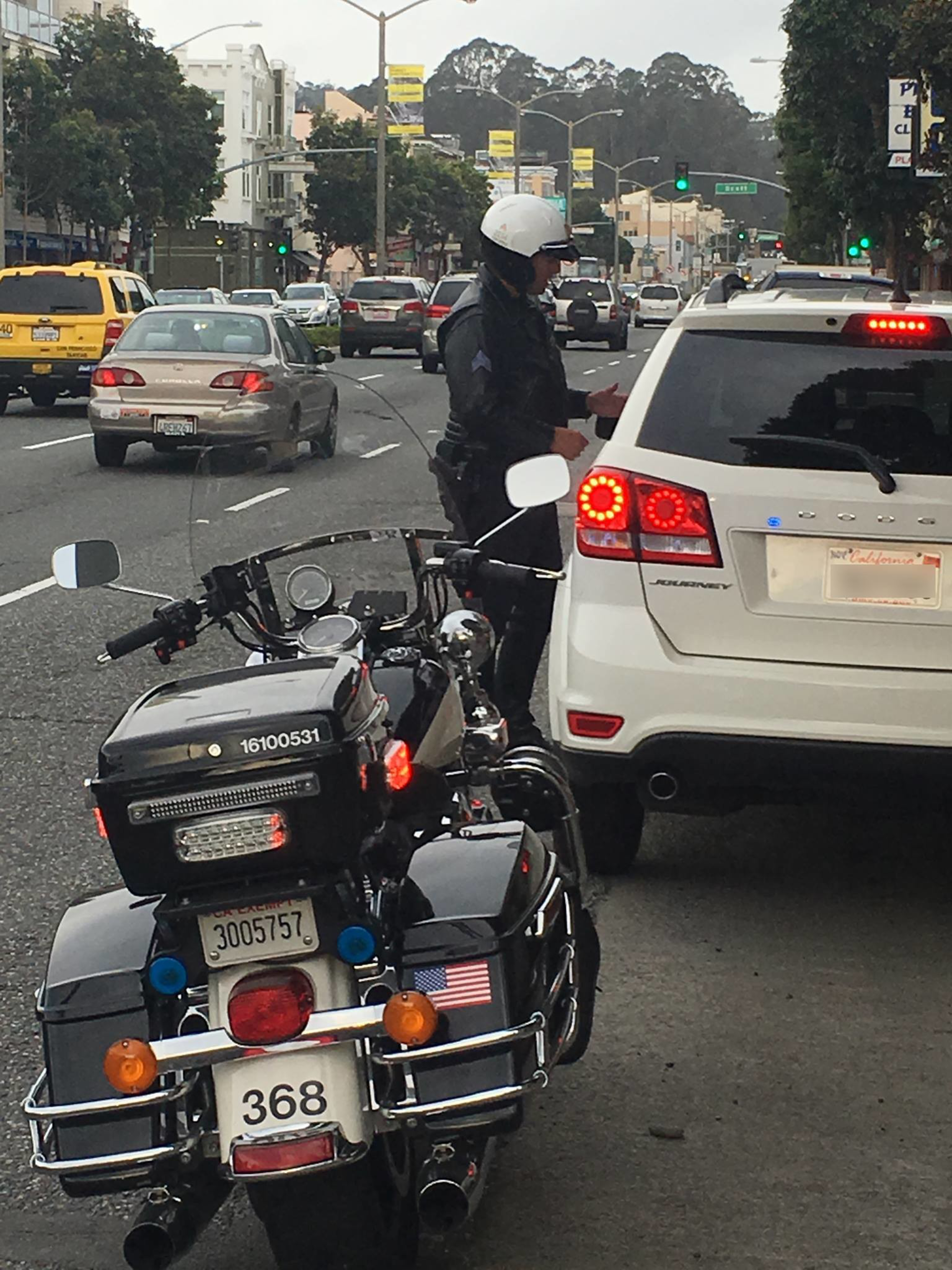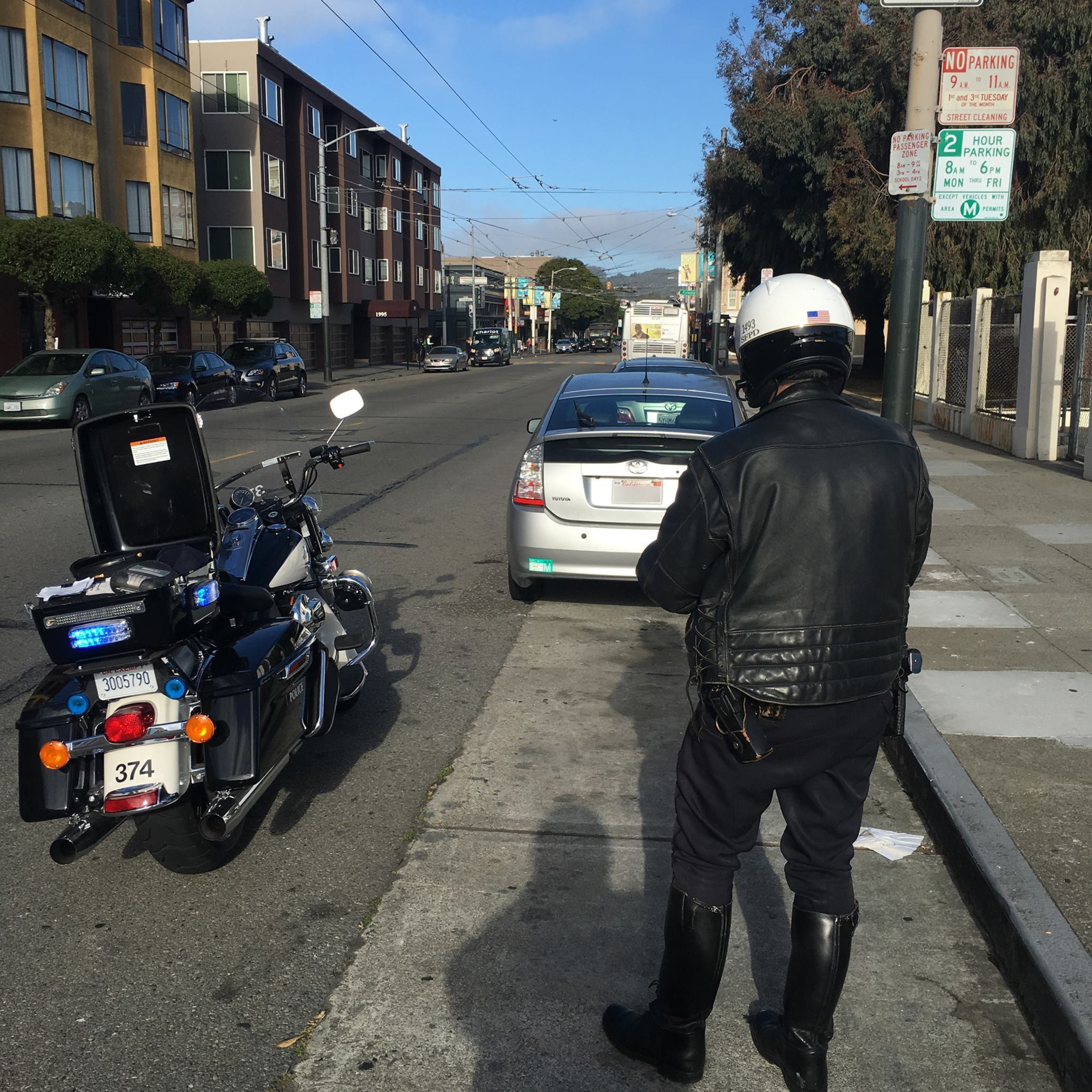Drivers beware: Traffic tickets are on the rise in San Francisco.
The San Francisco Police Department issued nearly three times as many traffic violations in the first seven months of 2024 as it handed out during the same period last year, according to a new report. The 9,050 citations SFPD wrote through the end of July put the department on track to issue more than 15,500 by the end of the year, which would make 2024 the highest-ticketed year since before the pandemic.
“We intend to keep this upward trajectory going,” SFPD spokesperson Evan Sernoffsky said. “I hope the word gets out to drivers that it’s not OK to violate traffic laws. It’s not safe, and it’s not going to get tolerated.”
The SFPD in April announced a long-awaited traffic enforcement plan to crack down on speeding. The new enforcement strategy came after a dramatic decadelong decline in traffic citations, dropping by 97% between 2014 and 2022. The March crash that killed a family of four in West Portal put a spotlight on traffic safety in San Francisco, increasing calls by political leaders for police to do more to discourage reckless drivers.
SFPD officials blamed the enforcement decline on short staffing and administrative requirements imposed by state laws. To increase citations, the department’s plan has focused on using crash data to analyze the most dangerous intersections, then deploying waves of officers to monitor those locations.
“We’ve come up with a strategy that gets the most bang for the buck,” Sernoffsky said.

But the rise in citations has not been enough to quell concerns from officials who see robust traffic enforcement as key to maintaining safe streets.
“It is positive. I am grateful, but I am not satisfied,” said Supervisor Rafael Mandelman.
‘An unacceptably low baseline’
May was the top month for violations so far this year, with the SFPD issuing nearly 1,800 citations. In 2023, the department regularly wrote fewer than 400 tickets each month. But in 2014, before the decadelong ticket decline, SFPD averaged about 10,800 violations monthly, 26 times more than during an average month in 2023.
That’s why Mandelman isn’t ready to declare victory in his long-running crusade to pressure the department to write more tickets.
“We were starting from what, in my view, was an unacceptably low baseline,” Mandelman said. “We still have a lot of work to do.”
People continue to die on San Francisco’s streets despite a renewed push behind the decade-old Vision Zero initiative to eliminate fatal traffic crashes. Twenty-three people have died in traffic crashes in San Francisco so far this year, according to preliminary data (opens in new tab) from the Municipal Transportation Agency.
If fatalities continue at the same rate, 2024 could end up being one of the city’s most deadly years since Vision Zero launched in 2014.
In a bid to improve safety, SFPD focuses its traffic enforcement on the five violations that are most likely to cause a car to collide with a pedestrian: speeding, failing to yield to a pedestrian in a crosswalk, running a red light, skipping a stop sign, and failing to yield while turning. So far this year, those five violations have accounted for about 53% of SFPD citations. In 2014, that rate was 24%.
But the department is likely to continue hearing calls from safety advocates for more traffic citations. Max Carter-Oberstone, a member of the police commission, thinks the department isn’t doing enough.
“SFPD still isn’t investing enough resources in traffic safety,” he said.
